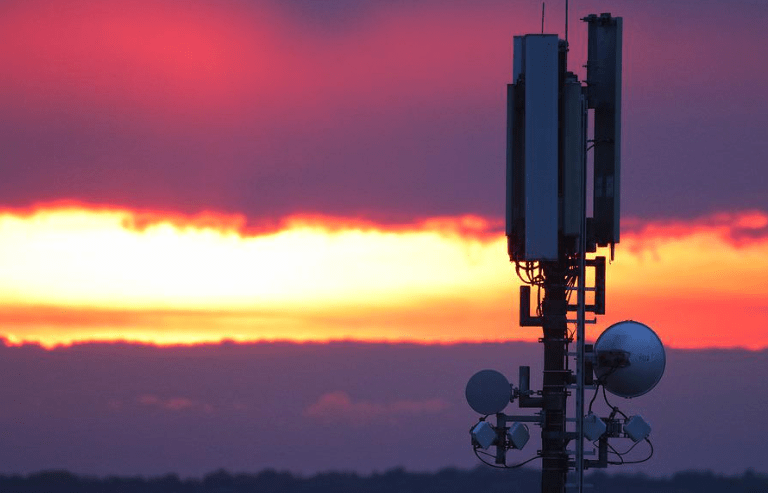Vodafone has announced the switch-on of the UK’s first wind and solar-powered mobile phone mast in Pembrokeshire, Wales.

Wind And Solar Power
The mast, designed to provide 4G coverage to the community of Eglwyswrw (pronounced Egg-lis-oo-roo), incorporates a wind turbine, solar panels, and on-site battery storage. This makes the mast off-grid and self-powering and enables it to function with no connection to the national electricity grid.
Connectivity For ‘Not-Spots’
Vodafone says that this type of mast could provide connectivity to ‘not-spots’ in the UK’s most remote and inaccessible locations. This could help bring mobile and internet services to rural communities, boost the local economy, tackle isolation, and close the rural digital divide.
Covering ‘not-spots’ with self-powering masts that use both solar and wind could help Vodafone reduce carbon emissions and support its target of reaching net zero UK operations by 2027, and help the industry achieve 95 per cent of UK landmass coverage by 2025.
No Digging + Quiet
Other advantages of the mast, which was built in partnership with wind turbine technology specialists Crossflow Energy and mobile infrastructure partner Cornerstone, are:
- The mast can be installed without the need to dig trenches and lay electricity cables, making it faster and easier to install while reducing the impact on the local environment.
- It is extremely quiet. This makes it viable for sensitive sites such as Areas of Outstanding Natural Beauty.
- The mast can be ‘filtered out’ as a solid object by radar, birds, and bats, so it is easily avoided, making it less harmful to wildlife.
- It will provide a more secure power supply, i.e. it should not be affected by problems associated with the grid.
- A reduced reliance on diesel generators for back-up power due to the increased renewable contribution from the combination of wind and solar, together with battery storage systems on-site.
Two-Year Trial
This first mast, at Home Farm in the village of Eglwyswrw is being run as a two-year trial which will hopefully provide data to help Vodafone optimise the technology and determine which sites are most suitable for ‘self-powering’ masts.
Roll Out More If Successful
Andrea Dona, Chief Network Officer, and Development Director at Vodafone said: “This self-powering mobile phone mast, with on-site battery storage, could help us connect places that were previously impossible to reach. It will also help us reduce carbon emissions and minimise our impact on local environments.”
“If this trial is a success, we would like to roll out more ‘self-powering’ masts, with a focus on areas with poor or no coverage.”
What Does This Mean For Your Organisation?
This is likely to be particularly good news for businesses in rural areas that have struggled to get any reliable phone connections (due to their distance from the grid and any masts) and also for the Welsh Government which has expressed its approval of green innovation being trialled in its rural communities.
In addition to potentially boosting the local economy, tackling isolation, and closing the rural digital divide (if more masts are deployed), it could also be good news for the environment. A mast that is self-powered with wind and solar, is quiet, and doesn’t require digging to install, so it will have a minimal impact on the environment.
If the trial is successful, this could also create more business opportunities and jobs in the development of similar masts and in other industries where remote, self-powered solutions are required. Wider usage of these masts will also help Vodafone to meet its own carbon emissions targets and help generally in the climate change battle by allowing a clean expansion of a network by not having to rely on the grid and by using natural on-site, clean power sources.
By QuiteGood.com
